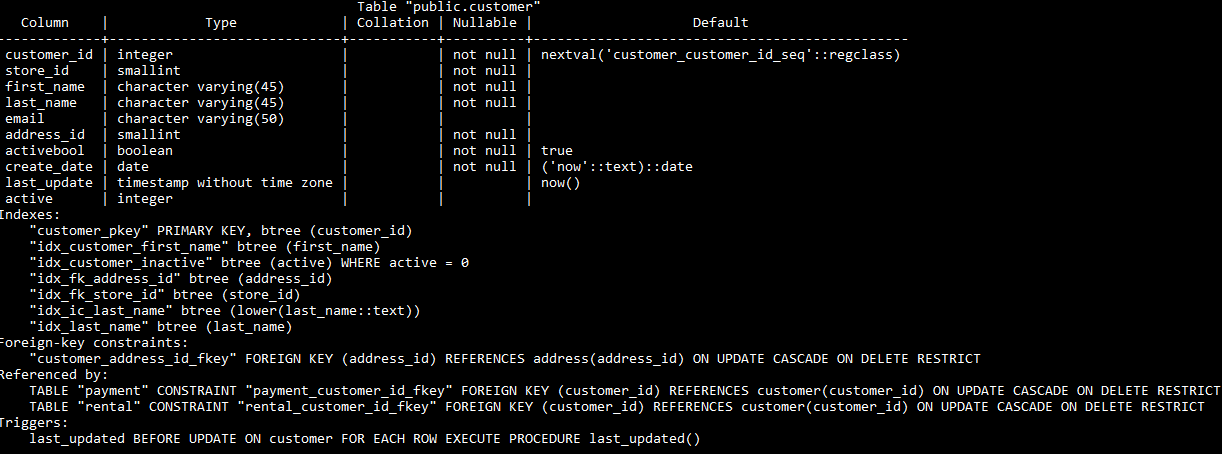


This command generates a migration file with the necessary code to apply the check constraint to the database.įinally, apply the migration to update the database: dotnet ef database update

Applying MigrationsĪfter adding the check constraint, create a new migration: dotnet ef migrations add AddCheckConstraintToProduct The constraint ensures that the Price is always greater than zero. In the above code snippet, we use the HasCheckConstraint method to add a check constraint named CK_Product_Price to the Price property of the Product entity. HasCheckConstraint( "CK_Product_Price", "Price > 0") Protected override void OnModelCreating( ModelBuilder modelBuilder) OptionsBuilder.UseNpgsql( "Your_PostgreSQL_Connection_String") Configure your PostgreSQL connection string here Protected override void OnConfiguring( DbContextOptionsBuilder optionsBuilder) YourDbContext.cs using Microsoft.EntityFrameworkCore To add a check constraint using EF Core, we'll leverage the HasCheckConstraint method during the model configuration. For this blog post, we'll use a hypothetical Product class with a Price property that we want to constrain to be greater than zero. Now, let's create a simple model for demonstration purposes.
EF PSQL COMMANDS INSTALL
Next, install the PostgreSQL provider for EF Core: dotnet add package If you haven't set up EF Core yet, you can do so by running the following command in your project directory: dotnet add package Microsoft.EntityFrameworkCoreĭotnet add package ĭotnet add package NET Core project or use an existing one that already has EF Core configured. NET Core SDK (version compatible with EF Core) To understand what Check constraint is take a look here: PostgreSQL: Constraints Prerequisitesīefore we proceed, ensure that you have the following installed:
EF PSQL COMMANDS HOW TO
In this blog post, we will explore how to add check constraints to a PostgreSQL database using Entity Framework (EF) Core. They allow you to define rules that data in a specific column must adhere to, ensuring that only valid and acceptable data can be inserted or updated. An unhandled exception occurred while processing the request.Check constraints are an essential aspect of maintaining data integrity in a PostgreSQL database. The following is the resulting exception. Run the application and hit the ConcurrenctTest route which is for my test. Var contactFromContext2 = context2.ContactsĬontactFromContext1.Address = () ĬontactFromContext2.Address = () Var contactFromContext1 = context1.Contacts New ContactsDbContext(new DbContextOptionsBuilder() Please note that this function isn’t an example of how things should be done just a quick and dirty way to prove that the concurrency check is happening. The first save will work and the second should fail. dotnet ef database update -context ContactsDbContext Testing it outįor a quick and dirty test, I added a ConcurrencyTest razor page under the Contacts directory. This function is going to ensure a specific contact exists, then pull the contact from two different DBContexts, make a mutation on the resulting contact objects, then attempt to save. Then, use the following command to apply the migration to your database. dotnet ef migrations add Concurrency -context ContactsDbContext This migration is a bit strange since the column technically already exists, but the migration seemed to be needed. NET CLI command to generate a migration for the above change. Next, from a command prompt in the same directory as your project file using the following. modelBuilder.Entity().ForNpgsqlUseXminAsConcurrencyToken() In the ContactDbContext add the following to the OnModelCreating function to enable concurrency checking on the specified entity, in this case, a Contact. The Postgres Entity Framework Core provide contains an extension that makes it very simple to use the xmin column as a concurrency token. If you read the official docs on Optimistic Concurrency and Concurrency Tokens you will find that all tables have an implicit/hidden system column call xmin which holds the ID of the latest updating transaction which means it gets changed automatically every time a row is changed. Unlike SQLite, Postgres has better built-in support for concurrency checks. You can grab the sample code before any change here. This whole post will only be touch files found in the Postgres folder/project. This post is going to tackle concurrency checks using Postgres to keep the projects in the repo with the same level of functionality. Last week’s post on SQLite Concurrency Checks used this repo which contains examples of using Entity Framework Core with SQLite and Postgres.


 0 kommentar(er)
0 kommentar(er)
